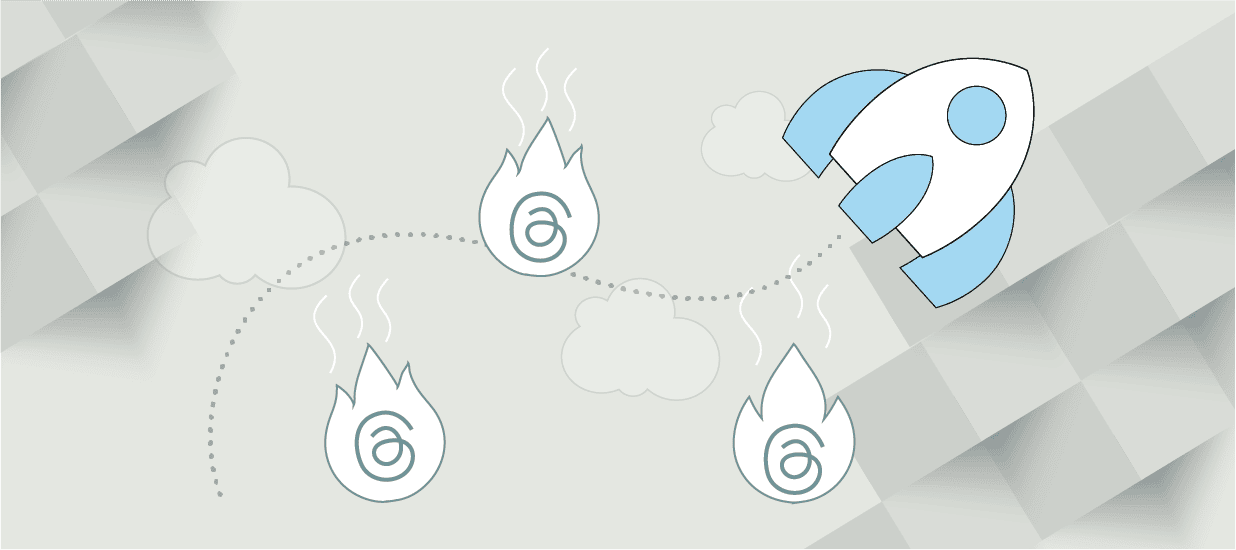8-minute read
Market research gives product teams deep insight into the problems real users and buyers face. Following tips for conducting market research helps collect solid data that humanizes the markets, identifies solutions, and drives action within companies.
Most consumers wouldn’t purchase an important product without doing some research first. So, why would a company develop a product without researching its buyers and end users?
Market research is the process through which product teams can test ideas and gather qualitative and quantitative data to understand market problems and build solutions that resonate with customers. This article explains how market research can give insight into buyers and users and how they can use research to inform the product planning process. We also offer 10 unique tips to help you make the most of your market research.
Keep reading to learn how market research intersects with product development, or use the links below to jump to the section that interests you.
- Defining Market Research
- Importance of Market Research for Product Teams
- Tips for Conducting Market Research
What is Market Research?
Market research is the process of gathering data and conducting research to understand possible customer groups and their pervasive problems. Market research can also allow you to evaluate possible solutions, including products or services, with those customer groups. Research can be gathered through interviews, experiments or tests, interviews, and focus groups.
This can involve primary data collected directly from potential customers, buyers, and users or secondary data gathered from external sources.
Ultimately, market research should inform product planning and positioning in the market. With the correct support and infrastructure, companies should move beyond market research to market-driven discovery, supporting ongoing market research and interpreting results with processes and infrastructure.
Why is Market Research Important for Product Teams?
Market research may seem outside the scope of product development, but it is one of the best tools product teams can have to build solutions that matter for their target markets. Market research gives insight into buyers’ and users’ behaviors, needs, and problems.
Understanding Buyers
A buyer is a person who makes the buying decision and pays for a product. In B2C contexts, a buyer of a paper product may be the adult in a household who shops for groceries and household goods. A B2C product’s buyer may also be the user. In B2B contexts, an enterprise software buyer may be a Director or C-level supervisor who approves the budget and contracts. However, the actual user may be a different employee, such as a marketing manager. Buyers do not typically make decisions without input from the user, but ultimately, buyers make the call.
Market research can help product teams understand their buyers by providing insight into the pain points they expect the products they buy to solve for others. They may be focused on bigger-picture goals and “needle-mover” factors, such as problems with efficiency, wasteful spending, or unrealized potential.
Additionally, market research about buyers can give insight into their user behavior, such as purchase patterns, levels of involvement with specific products, and generally what they are looking for in a product or partner.
Understanding Users
A user is a person who interacts directly with a product or service. In a B2B example, the user of a cleaning product is the person who uses it to clean. In this case, the buyer and the user may be the same person. Conversely, in a B2C context, a social media scheduling software user is like a marketing specialist or manager who interacts with the product multiple times per day. In some cases, often in B2C contexts, the user and the buyer are the same person. However, for B2B products, the buyer and the user are likely different people. That’s because the buyer who approves the contract is likely a higher-level employee who does not use the product day-to-day.
Conducting market research with product users gives deep insight into the ordinary experience with the product. This can help product teams identify pain points with current solutions, better understand real people’s workflows, and give context to regular and infrequent users who engage with products. In doing so, product teams can pinpoint their market’s pervasive problems. Using that root problem, they can develop, test, and iterate solutions for those problems.
Market Research and Market-Driven Discovery
Once product teams master key market research practices, they can move to a market-driven discovery model. Market-driven discovery isn’t a methodology; it’s an ideal state in which companies have the resources and processes to continually conduct market research, interpret the findings, and share their insights within the company to turn them into real actions. Market-driven discovery aims to move from sporadic, as-needed market research to cultivate meaningful and iterative processes to gather data about the market’s users and buyers.
Tips for Conducting Market Research
Tip #1. Set Your Research Objective. The main goal of experience research is to inform a design decision, so start with the decision you need to make. This big question that your research needs to answer is your objective. Your question can be very concrete (Where should we place a button on a web page to maximize user success at completing a task?) or more strategic (What are the most important problems for our product to solve for a certain type of user?). It should guide everything that you do from this point on. Perhaps most importantly, the question must be one you can act on if you answer it. If you can’t, why do the research?
Tip #2. Use Available Market Research. Don’t rediscover the known world. Look for reports or information about your target audience, including existing personas and industry reports or surveys related to your big question. Sources like support logs, social media sentiment, and forum discussions allow you to see what people complain about, what they say they need, and the topics they really care about. With this baseline information, you can design your market research to fill the gaps in that knowledge.
Tip #3. Develop a Market Research Plan. Now that you know the gaps in your understanding, create a plan for gathering the information. At a minimum, you need to:
- Decide what kinds of people you need to answer your big question (e.g., potential buyers or people doing a certain kind of work).
- Make a list of specific characteristics you are looking for, anything from the decisions they’re responsible for to the years they’ve been performing the task.
- Figure out a way to find these people. Will you put an ad on an online forum? Ask for help from your friends or family? Engage a professional recruiter? Ensure the research participants you choose are a good fit for your characteristics. If they aren’t, you may not care about their answer, or their answer may steer you in the wrong direction.
- Decide how you will gather the information. At its most basic level, do you need concrete answers about your product or exploratory stories that provide a broad understanding of your users? If you want concrete answers, usability testing is usually the easiest way to go. If you are looking for exploratory information, interviews or observations will often get you there.
- Be specific about the questions that you will ask. The finer points of creating questions depend on your research method, but we live by a few basic rules. First, avoid leading questions. Ask the question in a manner that doesn’t assume you already know the answer. For example, don’t say, “Is the reason you didn’t use this product feature because you didn’t see it?” Second, focus on asking people about what they already do, not on what they might want to do in the future. Instead of asking, “Do you want feature X to help you do task Y?” ask, “Tell me about the last time you did Y.” This helps determine where the pain points are today and if the product solves them.
Tip #4: Get Buy-In Before You Begin Data Collection. A researcher’s most frustrating experience is collecting great data that no one uses. This happens for many reasons, but it often comes down to one of two things: either people don’t believe your data, or there isn’t time to act on what you discovered. And if that’s the case, why collect data? Engaging stakeholders early on is the best way to ensure they believe in your research. Get their input at each step and help them relate what they need to accomplish to your research. Also, encourage them to observe the research process; just don’t invite so many people to a session that the research participant feels ganged up on.
Tip #5: Find a Research Partner. Use the buddy system. Don’t try to do research on your own. Coming up with questions, collecting data from participants, and figuring out what the data you collected means or what to do about it are not solo exercises. Different people bring different perspectives, which makes for a better result. So, bring a buddy along. Plus, when you interview or observe people, it helps to have one person ask questions while the other takes notes.
Tip #6: Review Legal Protocols. The human beings who participate in your research have rights. Legally, you must allow a participant to withdraw from the research, not answer a question, take a break, or do a task. Keep the information they provide confidential and do not use it in a manner that allows others to determine the participant’s identity. You will need a formal consent form to take pictures, videotape participants, or record audio. Use a non-disclosure form if you show participants concepts or products that are not currently available. If you are collecting digital data, you must also comply with data storage and usage laws.
Tip #7: Practice Before Your First Research Session. The first time you try gathering research using your plan, it should not be in front of an actual participant. Try it on your research buddy, other team members, or family. This trial run allows you to fix problems in the plan and understand what you can reasonably accomplish in the time you’ve allotted for each participant. You likely will find that you are trying to capture too much information, so expect to prioritize or trim your questions ruthlessly. You may also find that some questions don’t capture the expected information and must be fine-tuned.
Tip #8: Use Data to Drive Action. As a researcher, you must make people’s challenges visible and trigger action to solve their problems. Your job doesn’t stop with data collection; you should turn that data into a story that others can understand and act on. Get the preliminary results to those who can act on them as quickly as possible. You can also use the data to create detailed personas and use cases and put a human face on the data you share. This helps humanize the real market problems that your team seeks to solve.
Tip #9: Don’t Take Feedback. Your research participants aren’t designers, but they will often tell you how they would solve a problem. Take their suggested improvement as a symptom of a problem, but don’t treat it as the right solution. This approach will also reduce the thrash resulting from making changes based on whomever you spoke with.
Tip #10: Know When to Seek Help. Sometimes, do-it-yourself is not good enough. If you notice any of the following signs, it may be time to enlist the aid of a professional, experienced researcher.
- You can’t get the necessary information through a simple interview session or usability test.
- Your decision will have a significant impact on the business.
- Your questions are designed for children or other specialized populations.
When you get to know your buyers and users and share their stories with your product team, you’ll minimize wasted time and increase the odds of building a product experience that complements how people live and work. And you’ll know what to expect when you engage with a professional market researcher.
Author
-

The Pragmatic Editorial Team comprises a diverse team of writers, researchers, and subject matter experts. We are trained to share Pragmatic Institute’s insights and useful information to guide product, data, and design professionals on their career development journeys. Pragmatic Institute is the global leader in Product, Data, and Design training and certification programs for working professionals. Since 1993, we’ve issued over 250,000 product management and product marketing certifications to professionals at companies around the globe. For questions or inquiries, please contact [email protected].
View all posts







